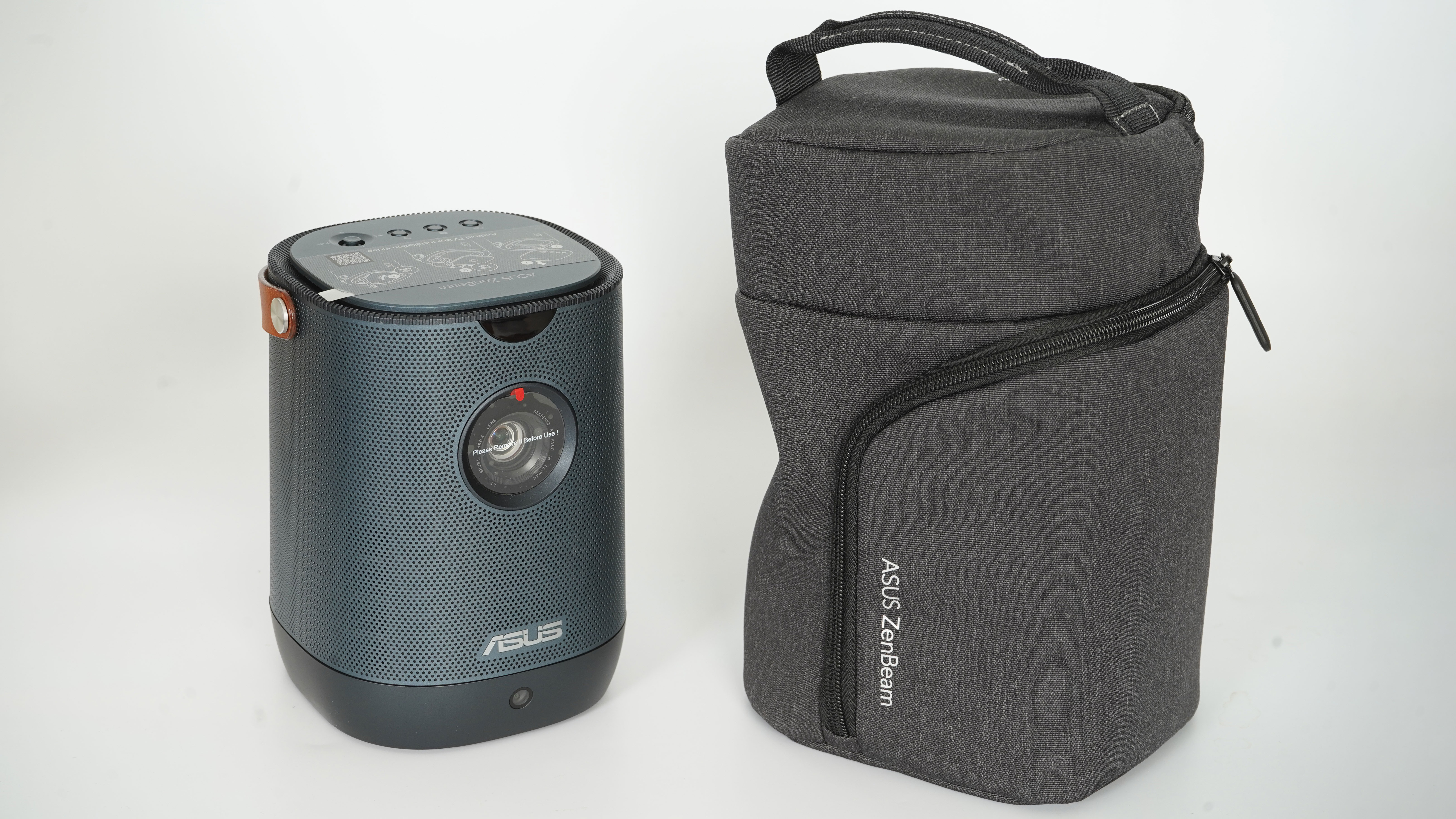
Portable projectors are no longer just a tool for making presentations; they can be a tool for creatives to experience their developing video in cinematic form, or for families to gather anywhere and enjoy a movie. With this device, the built-in battery means there need not even be power.
Native resolution: 1080P
Connectivity: Chromecast, Android TV box, USB-C DP, USB-C power, HDMI
Throw: 1m (3ft3) to 40-inch screen
3.1m (10ft2) to 120-inch screen
Brightness: 960 LED lumens (approx 400 ANSI lumens)
Ratio: 1:1.2
Contrast Ratio: 400:1
Weight: 710g / 1.57lb
With a spate of competition, the Asus needs to bring something special to the table to be worthy of our attention, and I'd say it does. It addresses the need for quality entertainment – perhaps the main driver of the category now – by including a small internal bay into which the latest Android TV Box can be tucked. They do, of course, include the box too.
That means no awkward faffing around with the manufacturer's own operating system, yet the possibility of flexibility later should it be necessary (it also makes sense for Asus, who can presumably re-purpose the design in less Google-friendly markets). Of course, this could be unwieldy, but... well, we'll get to that...
The other thing I think makes this device out is the inclusion of a batter which will at least last the length of a typical Hollywood movie, if not an extended edition (3.5 hours is quoted). Asus has also thrown in some other treats – graphics a little like screensavers to set the mood of a room, for example.
Given all that, there is at least the potential to entertain or present on the move. The question remains, is the quality of the standard filmmakers, or movie fans, will want?
Asus ZenBeam L2: Build and handling
The Asus is a very well-built product, made of quality materials and styled so you won't be embarrassed to carry it around with you. Ports are sensibly positioned, and there are two USB-C ports so you can take power through one and a DP video signal from another device. That's up-to-date thinking and we like it (seriously, USB-C is so universal amongst phone and laptop owners – or 'people' as we otherwise call them – why isn't it more common in projectors?)
There is one thing though. It doesn't actually come fully built. One piece is left out; the AndroidTV Box. This is both a brilliant idea and, perhaps, the device's flaw. The assembly stage is nearly effortless – the lid of the projector opens weirdly easily (it's magnetic) to reveal a bay where you can plug the square puck-like device in. The instructions are provided on the lid and you can peel it off after you've done.
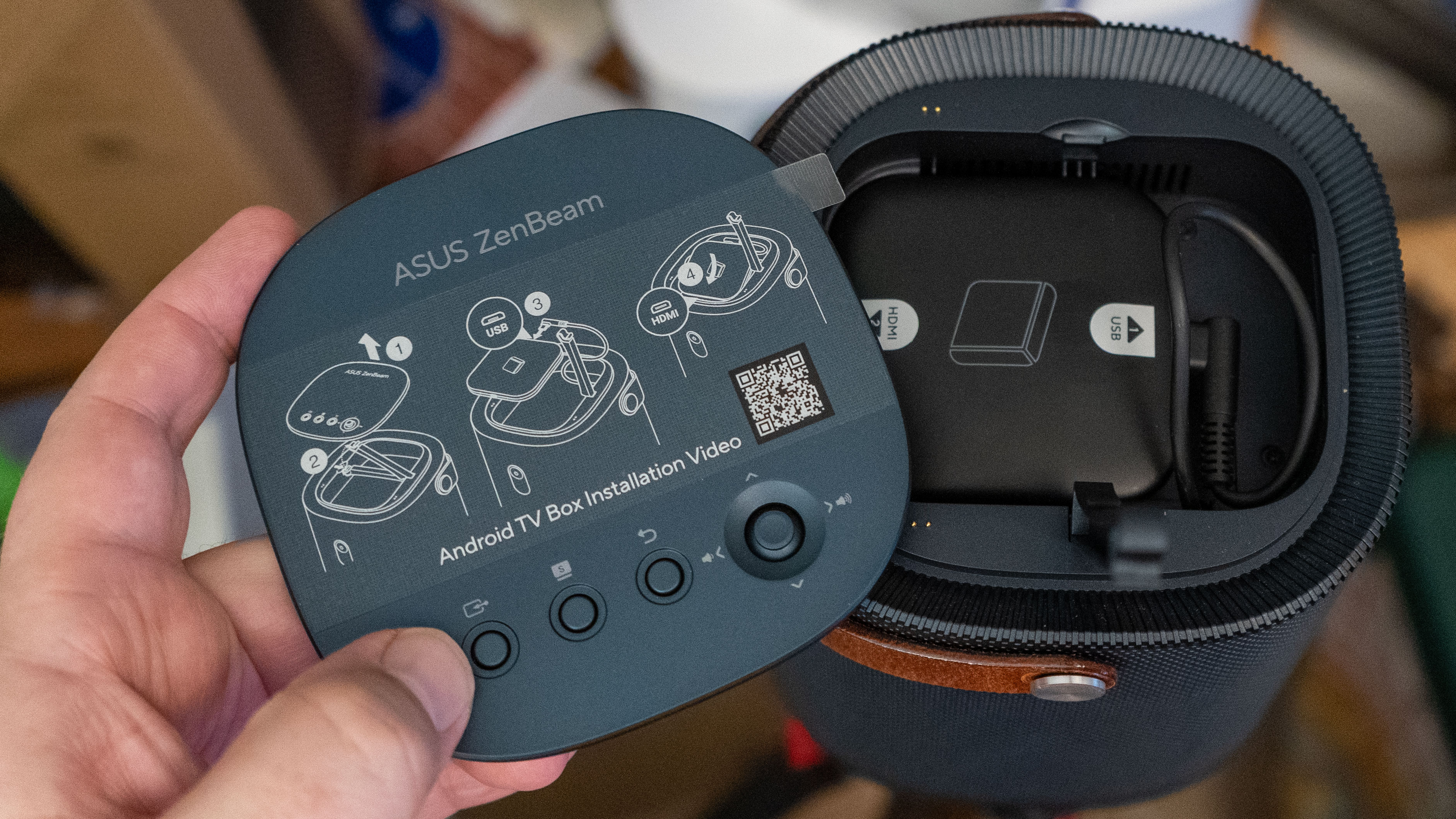
For lovers of the AndroidTV experience, this is a plus compared to many competitors which opt for their own operating systems. There is definitely a good range of apps available. However, you will need to accept that the projector itself has its own, somewhat separate, operating system. (Android TV isn't quite the same as a Chromecast; it is a stand-alone device with its own remote and Wi-Fi receiver – or, in this case, use of the supplied remote – while Chromecasts typically need a phone).
The housing is of good quality materials and has controls on the top. It has motion sensors to activate automatic keystoning, and a tripod thread on the base. The handle is a nice touch (assuming you don't mind leather), while for anything other than a journey to the next room the padded fabric case (which has a separate bay for the remote & power brick) is probably more sensible.
The remote is pretty generic – Bluetooth, of course, so you don't have to point it at the projector. Connectivity is all you need and no more, but because the external power supply connects via USB-C there are two USB-C sockets; only one takes video though. There is also a USB-A port, an HDMI port, and a 3.5mm jack for sound (it is also possible to use a Bluetooth speaker).
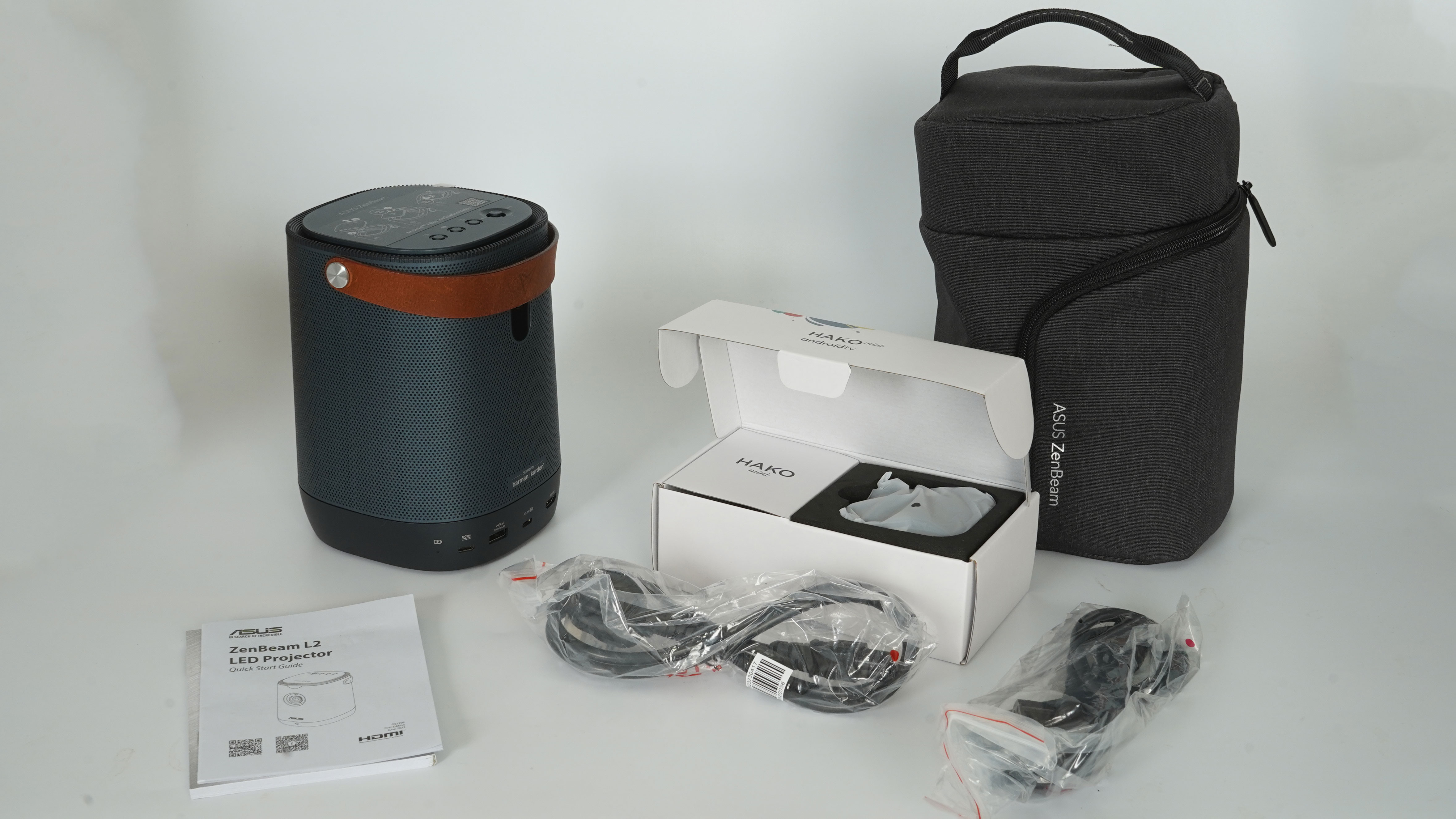
Asus ZenBeam L2: Performance
The essentials are definitely up to scratch. The tiny HAKO Android TV box has 4x ARM Cortex Z4 running at 1.8GHz with 2GB RAM and 4GB storage, which seems enough to handle the latest software update. It's this that handles the Bluetooth, Google Cast, Wi-Fi, and all the connected experiences through Android TV 12 (after running an 800MB firmware update).
That update was very necessary as it turned out; before it, I had no luck whatsoever with the voice commands on the remote (which really do help when searching for a show or film) or connecting to my Bluetooth surround sound system.
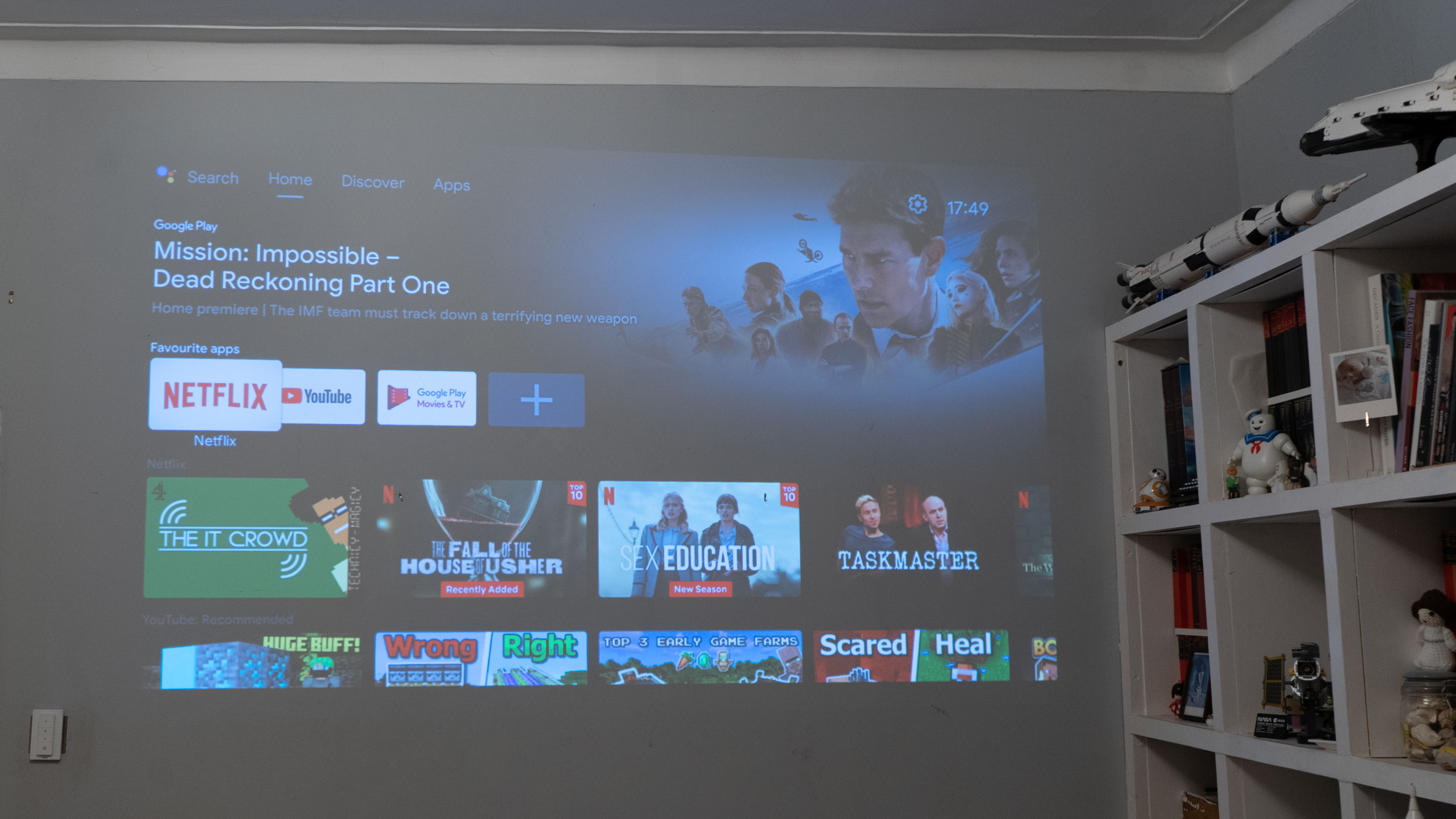
Picture quality is good – the 1080P native quality beats the product's own successors and a lot of the cheaper portable projectors out there. Gaming is an option too, since it'll handle 60fps (in fact it'll accept a 4K 60fps signal and downsample – oddly by default the HAKO sets itself to 4K which would seem to tax it unnecessarily).
Lights are bright enough (once you've found the brightness settings and turned them up), whilst the contrast is definitely movie-like (if not, perhaps, enough to satisfy someone used to an OLED monitor!) Dark areas have more to do with the quality of your projection surface (and your environment), while color saturation impressed across the image area.
The imaging modes are well worth getting to know. LED lumens are 2.4x ANSI Lumens, so the 960 figure in the sales material might seem an exaggeration compared to traditional projectors, however getting into the image settings menu will at least let you turn the brightness up (on my test model, at least, it didn't default to the max). The image modes include Bright, Standard, Theatre, Eco, Scenery, and Game and are HDR10+ friendly; I'd say turn the contrast down a touch from the default as well as check the brightness is up (it's about 100 ANSI lumens dimmer than 'Bright' in 'Theatre' mode, and dimmer still in 'Battery mode – Low').
The auto-focusing and keystoning could be better; sometimes it isn't quite as sharp as you'd like, and you end up trying the manual buttons. On the plus side, you can just nudge the device to get it to try again (by default it automatically refocuses after movement, which makes setting up a backyard or garage movie night very easy. Also, the keystone often seemed to go far too far the other way, especially on painted walls. The manual controls are a solution, of course.
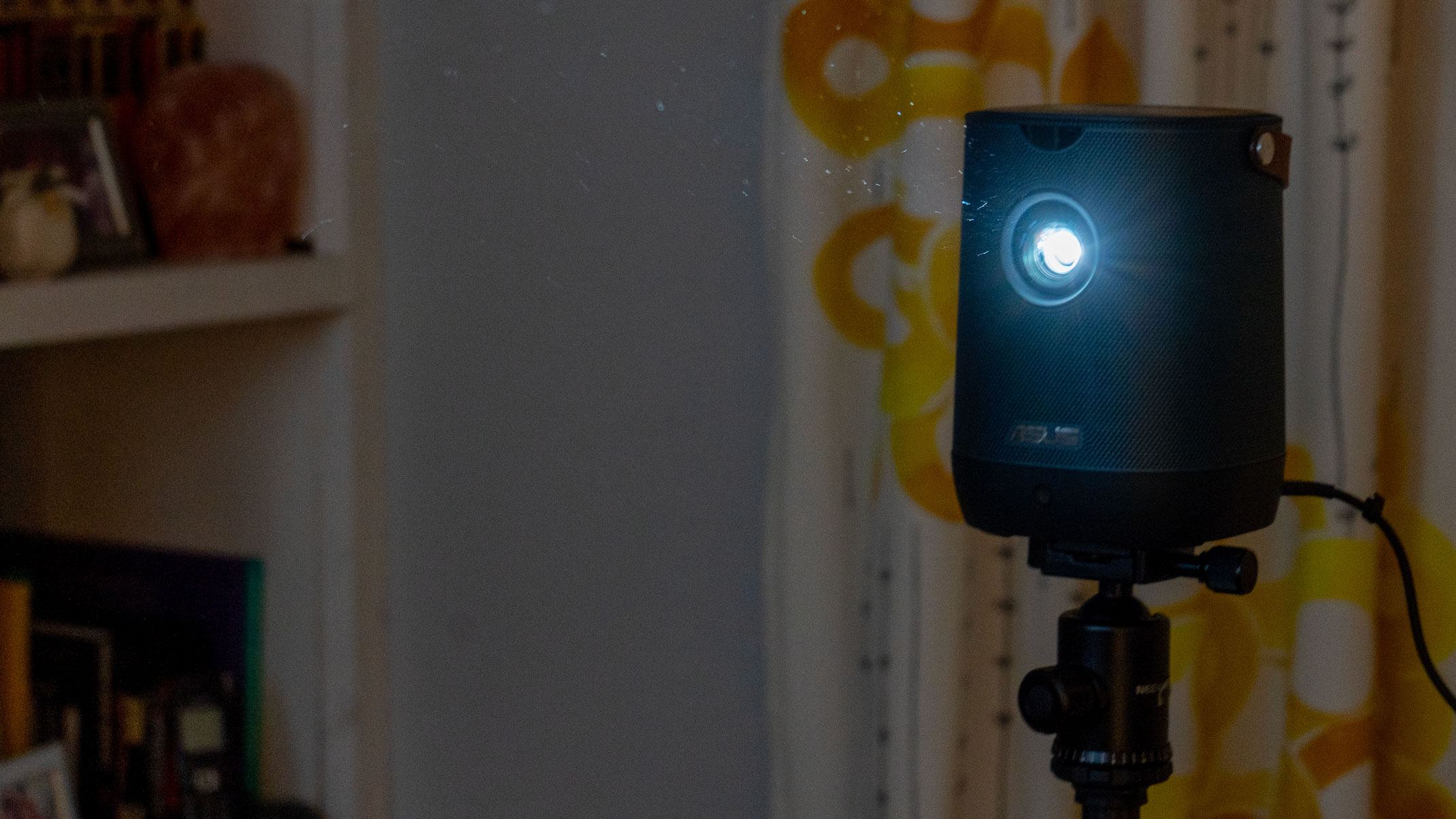
The DLP imager is one of the best I've viewed, with excellent contrast. It was good enough to show up on our 'gray wall test' (yes, exactly as it sounds) as well as on white and traditional projector screens. Obviously, I can't test whether it'll last the suggested 30,000 hours but I can't see why not (that'd be three and a half years of use!).
Asus ZenBeam L2: Overall Verdict
This is a good-looking, sturdy-feeling LED projector that isn't too hard to move around despite having enough battery power on board to make the movies portable. (and, at a claimed 3.5 hours, comfortably more than the Nebula Capsule 3's 2.5 hours). Also, though I had little use for them, the Asus Light Wall effects were quite fun, too, and a nice touch that earns the 'Zen'.
The aesthetics are slightly let down by the user experience oddities exacerbated by the separate Android TV Box – perhaps there is some kind of useful future-proofing, but I suspect it is more about being able to offer different versions in other markets. My other main complaint is that, while the fan isn't overly intrusive, the Harmon/Kardon 10W speaker never seems loud enough to impress.
Grumbles aside, however, this is still a very slick projector, especially for media enjoyment, since there is little worry that a platform as big as AndroidTV will be abandoned by the major platforms. There is even an Apple TV app! The USB-C / DisplayPort also means you won't need more than one cable to connect to a phone or laptop on the move, so this is great for sharing your movie projects, photos, or work on the move (and again very future-proof).
Definitely one of the better, if not the best, projectors of its type, and one of the brightest for the money this is an easy recommendation.
Should you buy the Asus ZenBeam L2?
✅ Buy this if...
- You want a projector with enough battery for a feature film
- You like to have access to the AndroidTV app store
- You like the convenience of USB-C charging
🚫 Don't buy this if...
- You need sound to fill a large room
- You want a 4K image
- You need a very bright picture (though it is bright for a portable)







